From 1G to 5G evolution, a magnificent history of mobile communications!
Modern life is inseparable from mobile communication. From the generation and transmission of information to reception, there are countless flashing wisdom behind network communication. From the evolution of 1G to 5G, the transition of the era is followed by a scene. The rivers and lakes disputes behind the communication standards are also turbulent and fierce, and finally a great history of mobile communication.
1G
King of Simulation - Motorola
When it comes to two-way wireless communication, you can't help but mention Motorola. If AT&T was the king of wired communications, Motorola was the pioneer of mobile communications.
Initially, wireless communication technology was mainly used in the national aerospace and defense industry, with military color, as well as Motorola's development.
Founded in 1928, Motorola signed a contract with the US Department of the Army during World War II to assist in the development of wireless communication tools. In 1941, Motorola developed the first cross-generation product SCR-300, which is still the most classic image of American communications giants in the movie.
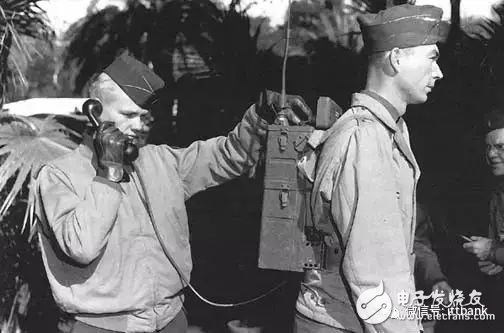
Although the SCR-300 weighs 16 kilograms and even needs a dedicated carrier, or is installed on vehicles and airplanes, the SCR-300 uses FM technology to make the call distance reach an unprecedented 12.9 kilometers, enough for the artillery. The observers contacted the artillery positions and also allowed the ground forces to communicate with Army Aviation.
No matter the communication equipment during World War II, the first color TV, semiconductor chip, DSP communication mobile phone chip, and the "big brother" invented in 1980, established the AMPS (Advanced Mobile Phone System) telephone system...
As a leader in analog communication technology, Motorola is a market leader in mobile communications and computer processors. In 1989, it was selected as one of the most forward-looking companies in the world.
It is a pity that after a generation of giants failed to transform with the market trend, they eventually collapsed.
2G
GSM and CDMA dispute
Due to poor call quality and confidentiality of 1G analog communication and unstable signals, people began to develop new mobile communication technologies. In the late 1980s, with the maturity of the application of large-scale integrated circuits, microprocessors and digital signals, mobile operators at that time gradually turned to digital communication technology, and mobile communication entered the 2G era.
Since the communication industry is a national strategic industry, the competition between communication standards is a comprehensive struggle between countries and alliances. Once lost, one party must continue to pay high patent fees to the other alliance, and it is easier for the other party to grasp the industry. Initiative.
Motorola monopolized 1G, which also means that the first generation of communication standards are held in the hands of Americans.
At the beginning of digital communications, European countries realized that it would be technically difficult to compete with the United States.
In the past 20 years, the EU has always been unwilling to lag behind the United States. If they come up with a different standard, it is difficult to dominate the world. (The standard is that there are too many people, and if they speak loudly, they will win hard; You are different from others.)
They learned the failures of their own politics, strengthened internal alliances, and finally surpassed the United States in the 2G era.
Since 1982, the European Post and Telecommunications Management Committee has established the “Mobile Expert Group†to study communication standards.
The name GSM is the abbreviation of the Mobile Expert Group (French: Groupe Spécial Mobile), and the meaning of this abbreviation was later changed to "Global System for Mobile communications" to promote GSM to the world.
The core technology of GSM is Time Division Multiple Access (TDMA), which is characterized by distributing one channel equally to eight talkers, one person can speak at a time, and each person takes 1/8 of the channel time in turn.
The drawback of GSM is its limited capacity. When the user is overloaded, more base stations must be established. However, the advantages of GSM are also outstanding: easy to deploy, and the use of a new digital signal encoding to replace the original analog signal; also supports international roaming, providing a SIM card to allow users to still store personal data when changing the phone; can send 160 words in length SMS.
It can be said that the technology and application of mobile communication have made amazing progress in the 2G era.
In 1991, Ericsson and Nokia took the lead in setting up the first GSM network on the European continent. In just ten years, 162 countries around the world have built GSM networks with more than 100 million users and a market share of 75%.
When Europeans were ambitiously trying to overtake the US to dominate the world, the Americans came up with three sets of communication systems at the same time. Two of them are also based on TDMA technology, and the third is Qualcomm's Code Division Multiple Access (CDMA).
The TDMA channel is only used by one person at a time, and eight users have to use it in turn. The capacity is limited. However, CDMA adopts encryption technology, so that everyone can talk at the same time and will not be heard by others (such as number 1 can only talk to number 1, No. 2 can only talk to No. 2 and does not interfere with each other. The capacity is greatly improved.
From a technical point of view, the capacity of a CDMA system is more than 10 times that of GSM.
Since the 1950s, CDMA has been one of the communications technologies of the US military. Under the leadership of founders Irwin Jacobs and Andrew Viterbi, Qualcomm successfully applied CDMA to mobile communications in 1989.
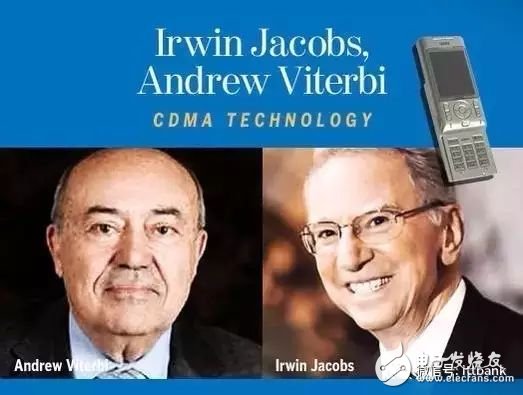
However, Qualcomm has no actual mobile phone manufacturing experience, and European operators are not interested in its intellectual property rights. Even in the United States, only a handful of operators are willing to use the system.
Early reports on CDMA were quite negative, base stations could not achieve the expected performance, and CDMA handsets had nowhere to buy. Overall, the thunder is loud and the rain is small.
At the same time, Europe invested heavily in GSM, established international roaming standards in just a few years, and distributed GSM base stations around the world.
Naturally, CDMA started a step later than GSM, and the US domestic resources were dispersed, and CDMA lost more than half of it.
In the 2G era, CDMA was a loser. On the other hand, the failure of the United States in the battle for communication standards has indirectly affected the competitiveness of Motorola's mobile phones.
While digital mobile phones are gradually replacing analog mobile phones, Motorola still has a 40% share of the analog mobile phone market, but less than 20% of digital mobile phones.
For the threat of digital communication, Motorola miscalculated the life of the analog mobile phone, when its executives said: 43 million analog mobile phone users, can't be wrong!
Just as AT&T didn't want to pay for it in the wireless phone department, Motorola's most profitable and loudly speaking analog phone division was less likely to let resources flow into the digital phone division.
The same story can be seen in the battle between Nokia and smartphones. The fall of the enterprise giant is rarely due to a single external factor, mostly due to the internal consumption of the enterprise, resulting in slow technology advancement.
In 1997, Motorola finally stepped down from the altar, and its global mobile phone market share plummeted from 50% in 1997 to 17%. After 20 years of glory, Motorola was finally killed by a company that was still in the papermaking industry and launched its first digital phone in 1992.

3G
Qualcomm's patented mines and the three major standards
As mentioned above, Qualcomm's CDMA technology is superior to the European Union's GSM TDMA technology in terms of capacity and call quality. However, GSM was deployed one step earlier and quickly launched the world in a short period of time. As a result, CDMA was only a small thunderstorm at the time, and Qualcomm was once in crisis.
But in the 3G era, the situation has reversed. what is the root cause?
Let us first talk about the history of Qualcomm.
1 Qualcomm's patented mine
Entering Qualcomm's headquarters in San Diego, Calif., a thick patented wall is adorned with Qualcomm's nearly 1,400 patents on mobile communications.

This is the famous "Qualcomm Patent Wall".
Everything from Qualcomm is clearly written on this wall: wealth, monopoly, success... Qualcomm is like a viper, squatting in the neck and getting a high profit.
During the Cold War, the communication methods used by the US military were able to encrypt and decrypt information, called code division multiple access (CDMA) technology, to ensure that information was transmitted without being stolen by the Soviet Union.
Linkabit is the first electronic communications technology company in San Diego, Calif., to take over the order to develop satellite communications and wireless communications technologies for the US military and the Aerospace Corporation.
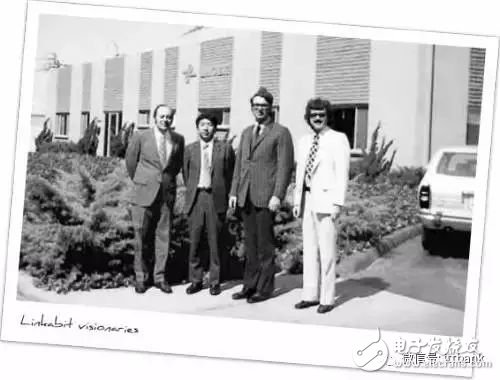
The two founders of Linkabit are the big cattle in the communications industry - Irwin Jacobs teaches at the MIT Electrical Engineering Department, and his book Principles of Communication Engineering lays the foundation for communication at the time and even now. It is still the biblical book of communication.
Another founder, Andrew Viterbi, proposed the famous Viterbi algorithm.
In 1980, Jacobs and Viterbi sold Linkabit to M/A-COM, a company in the field of communications, and in 1985 founded Qualcomm, which means quality communication (QUAlity COMMunications).
In 1989, Qualcomm significantly improved the power of CDMA and successfully commercialized it.
It is a pity that at this time the European Communications Standards Association has embarked on the development of GSM technical standards, and soon introduced to the European and Japanese markets.
The United States' Communications Industry Association also determined that the TDMA technology used by GSM is the 2G standard. Although CDMA has more capacity and better call quality than TDMA, the technology is more complicated, and most operators do not believe in the feasibility of technology.
One of the keys to Qualcomm's development lies in Jacobs' unscrupulous three patent rogue means:
1) Landmines: Establishing a monopoly patent layout
Qualcomm has built a CDMA patent wall around power control, co-frequency multiplexing, soft switching and other technologies, which has great advantages in terms of patent quantity and quality compared to other manufacturers.
But Qualcomm is not satisfied with this, it wants to enjoy this lucrative profit by one person.
At Qualcomm, a large number of patent attorneys who are no less than the technical R&D department have been recruited. Through the merger and acquisition, and the patent war of infringement of patent infringements, all CDMA related patents have been step by step.
The duty of a patent attorney is to apply for a patent, to talk about the patent price, and to sue the infringing company.
The second step is to apply for a large number of garbage patents, and use the garbage patent to guarantee its core patents - apply for new patents before the expiration of the old patent protection, or apply for a large number of CDMA peripheral patents, and then declare the technology as a part of the new technology. , blocked all the technology about the periphery of CDMA.
2) Buried mines: putting patented technology into communication standards
Collecting patent mines is not enough, and people have to step on them.
The first thing to understand is that you need communication standards? You can't let telecoms can't get mobile phones and Huawei can't get through iPhones. The purpose of developing a unified communication standard is to enable interoperability between different operators, base station devices and mobile phones.
Since the GSM standard is jointly proposed by European operators and equipment vendors (such as Ericsson and Nokia), the intellectual property rights are shared and the patents are basically open.
However, Qualcomm has proposed a 2G standard using CDMA technology, which actually hides the CDMA patent technology, which is equivalent to the Qualcomm patent when using the 2G standard.
This kind of monopoly of a certain company's patents monopolizes a certain standard. It is reasonable to say that it will not happen in the communication standard-setting group composed of members of other countries. Other countries and manufacturers will strongly oppose it because of their own conflicts of interest.
However, at that time, 2G research was just getting started. Most manufacturers' attention was still on the GSM standard proposed by Europeans. Qualcomm's CDMA technology did not have many people to ask, but instead let Qualcomm enter.
3) More mines: CDMA algorithm into the chip
The final move of Qualcomm is to embed the CDMA algorithm into the integrated chip. Its biggest feature is that the integrated signal transmission and reception, power management and digital-to-analog conversion are equal to a single chip, which is what we call SoC (System on Chip).
In this way, mobile phone manufacturers using Qualcomm patents must first pay a license fee to obtain patent rights. After the chip or product is mass-produced, according to the shipment amount, a certain percentage of the price of the product is charged, and the average payment of the mobile phone sales is 5-10%.
This is quite unreasonable—the parts of the screen, lens, case, etc. are all unrelated to CDMA, and they have to be pumped as a percentage of sales. (Is there a diamond on the phone, is the profit still on Qualcomm?)
At that time, Qualcomm provided a complete solution for SoC. Most mobile phone manufacturers have no technical ability to integrate with SoC, and they can only use this tool.
If you set up a bureau, someone will be willing to step on it. The high threshold of Qualcomm's patents blocked competitors and blocked the rapid marketization of CDMA. Most operators still chose the GSM system. Qualcomm, which is supported by patent royalties, is not good in the United States.
At this time, Qualcomm ushered in an olive branch - from the Korean government.
Before the development of CDMA, South Korean operators, mobile phones and other communication equipment manufacturing industries were quite weak. In November 1990, Qualcomm and the Institute of Electronic Communications (ETRI) signed a CDMA technology transfer agreement.
Qualcomm promised to hand over 20% of the annual patent fees collected in Korea to the Korea Electronics and Telecommunications Research Institute to assist in its research. The Korean government also announced that CDMA is the only 2G mobile communication standard in Korea, and fully supports South Korea's Samsung, LG and other CDMA technologies. Commercial applications.
South Korea does not move closer to Europe supporting GSM and has chosen CDMA as the 2G standard, mainly for low-cost patent concessions. Although it has taken certain risks, it has finally received corresponding returns.
Through the development of CDMA, Korea's mobile communication penetration rate has rapidly increased. In just five years, the number of mobile communication users has reached 1 million, and SK Telecom has become the world's largest CDMA operator. Communications equipment manufacturers have sprung up, and Samsung has become the world's first CDMA mobile phone exporter.
CDMA not only promoted the development of the Korean communications industry, but also promoted the development of the entire Korean economy. So many people said: "Korean people saved Qualcomm", Qualcomm has since become a global multinational company.
South Korea's success model proved the possibility of CDMA commercialization for the first time to the world, and also enabled some US operators and equipment manufacturers to resume confidence in CDMA technology.
At the same time that Qualcomm and the Koreans earned a lot of laughter, let us pull the picture back to Europe.
After 2000, the speed and capacity cap of 2G gradually faced bottlenecks. After 1G to 2G, the technology revolution of the big turnaround was made. The major mobile phone manufacturers ate the lessons of history, and all of them were prepared to meet the 3G era.
2 Europe and the United States fighting law: three major 3G communication standards
The biggest advantage of 3G is faster network speed. The download speed of 2G is only about 9600bps to 64kbps, while the initial speed of 3G is 300k-2Mbps, which is more than 30 times.
Ericsson, Nokia, Alcatel and other strong European manufacturers know that TDMA is difficult to compete with CDMA, it is more difficult to be a 3G core technology, but no one wants to accept Qualcomm's hegemonic program.
So Europe and Japan and other countries that originally promoted the GSM standard joined forces to form the 3rd Generation Partnership Project, which is responsible for the development of the third-generation global communication standards.
3GPP carefully referenced CDMA technology to minimize the patented traps of Qualcomm and developed a similarly similar W-CDMA.
Qualcomm quickly joined forces with South Korea to form 3GPP2 (3rd Generation Partnership Project 2) to compete with 3GPP and launched CDMA2000.
Since you all have your own set of standards, of course, we can't fall behind in China, and we have a TD-SCDMA.
No one wants to be Qualcomm, so CDMA2000 is less; TD-SCDMA is only used in China; naturally, the final result is that W-CDMA has the most participants, the most mature of the three 3G communication standards, and the highest market share.
However, because the three major communication technologies have touched the underlying patented technology of CDMA, it is still inevitable that Qualcomm will smash a piece of profit pie. Qualcomm is the biggest winner in the 3G era.
However, what really makes Qualcomm profitable is the rise of smartphones.
3 The rise of 3G, starting with the iPhone
In fact, since 2000, the communications industry has been crying for 3G, but it has been called for a few years until 2007 and 2008. What is the reason?
Very simple, there is no killer application in the market, and your technology is no longer powerful. On the contrary, Qualcomm has tried its best to write patents into the standard, but the standard is not used, and it can only be used.
What really makes 3G fire and make Qualcomm profitable is the innovation of mobile communication devices - smart phones.
When it comes to smartphones, everyone naturally thinks about Jobs. Apple launched the first iPhone in 2007, which promoted the era of a smartphone.
But the person who thinks of the IDE is not a Joe helper. He also borrowed from the previous Nokia Symbian phones and Microsoft Windows Phone.
At the beginning of the 21st century, the 3G world depicted by the telecommunications industry said: Anyone can use mobile phones or other mobile devices (such as PDAs) to make calls and access the Internet anytime, anywhere. In addition to transmitting voice, they can also transmit data and video. Computer Games….
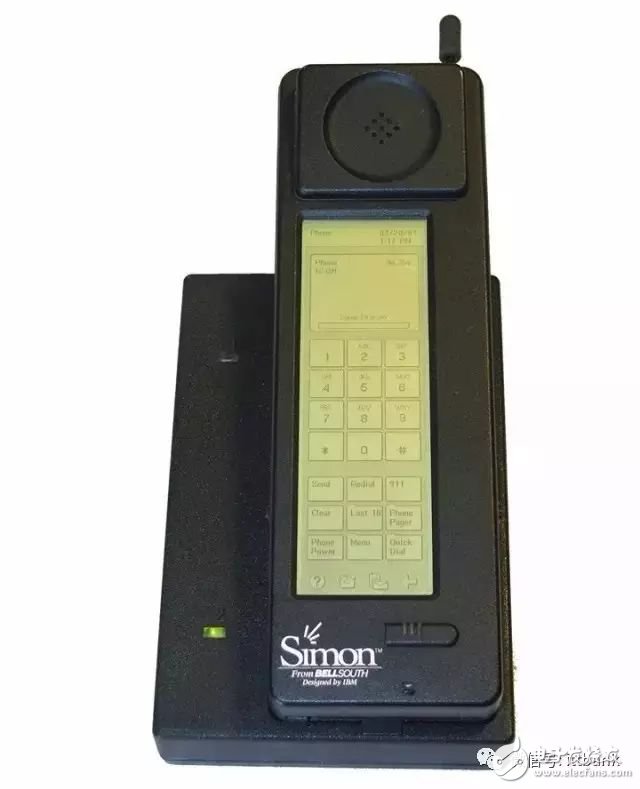
IBM Simon launched the world's first smartphone in 1994, using the touch keyboard completely, and was the first mobile phone to sell software applications.
Sounds familiar? Today's familiar scene, twenty years ago, is a grand ideal.
3G once carried the high expectations of the global telecommunications industry. In 2000, the United Kingdom, Germany, France, Italy and Spain began bidding for 3G licenses and wireless spectrum auctions. The total number of operators invested about 90 billion US dollars. Germany has set a record for the auction of up to $45.8 billion in 3G licenses.
It is reasonable to say that high bids will be passed on to consumers in the future. The 3G license fee in Europe is about three times that of the deployment system, which means that the non-voice revenue generated from the provision of 3G (that is, the Internet access fee) must be three times that of the voice, and the entire investment can be returned.
In the absence of a killer application for mobile Internet access, it is obviously impossible.
So the developers left their debts and almost useless 3G licenses, and some companies tried to file a lawsuit with the government that issued the license. Not only did the follow-up financing and equipment investment struggle, but the stock price plummeted, and 3G services could not be launched as scheduled.
The European telecommunications industry was once in a state of collapse.
The US "Bloomberg Business Weekly" described the disillusionment of the European 3G vision with "the story of the bubble" and "a catastrophe in Europe". It was not until four or five years later that European operators gradually recovered their vitality and began to build 3G networks.
Compared with Europeans who burned their money early and lost a step in the 3G transformation, US carriers have delayed the issuance of licenses due to the current frequency occupation problem, and will not be able to issue 3G licenses until early 2004, which in turn makes US carriers Keeping more resources and investing in 3G networks can be said to be a blessing in disguise.
With a perfect 3G network, everything is ready, and only a shortcoming, it is a smart phone.
The earliest smartphone operating system was Windows CE released by Microsoft in 1996. Because Microsoft has no rivals on the PC operating system, the new mobile communication market still uses the thinking mode of the past PC operating system, resulting in a congenital defect of slow system speed.

On the other hand, British company Psion and Nokia, Ericsson, and Motorola jointly established Symbian in 1998 to develop a mobile-specific operating system to defend against the raging Microsoft.

Windows CE is really only a simplified version of Windows, and Symbian was born for mobile phones at the beginning, and the stability has better performance.
Unfortunately, in 1999-2004, Symbian still relies on traditional mobile phone functions in development. Nokia's internal mentality is always: The most important thing is how to sell mobile phones. The application just makes the mobile phones sell better.
Symbian also suggested that Nokia can have more other features in the development of smart phones, but Nokia can't listen.
This scene is like the transformation of Motorola from analog to digital mobile phone at that time. At that time, the most profitable and loudest voice was the functional phone with keyboard and good answer. The touch screen and even the most important APP ecosystem were not at the top of Nokia. Cognitive.
In the case of Windows Mobile and Symbian, Nokia is still a big one, there is a role that is secretly growing, its name is Apple.
In 2005, Apple acquired a company called FingerWorks, which has been developing gesture recognition, multi-touch technology since 1999, but at the time such applications were not optimistic, no one guessed What does Apple buy to do.
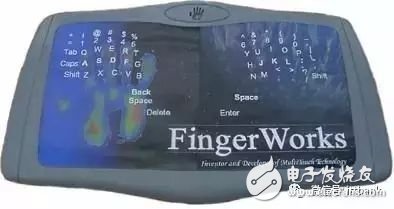
What should Apple do?
On January 9, 2007, Jobs released the first iPhone.
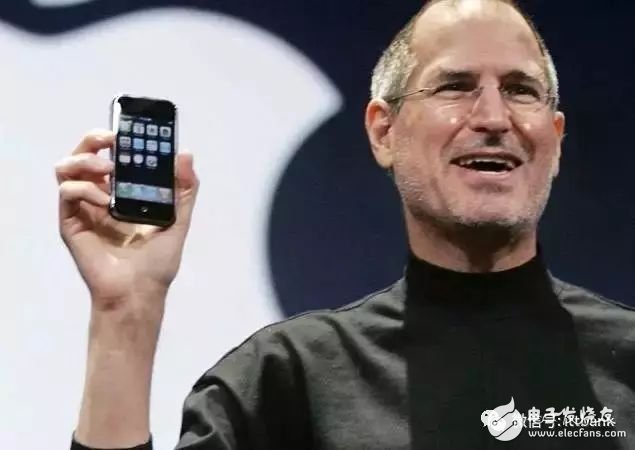
iPhone1's main iTunes Music Store, Safari, Email, Camera and other applications are graphically presented on a simple and beautiful screen. With multi-touch screen technology, the iPhone removes the keyboard and uses a Home button and a finger. Operable.
"The best interface is our finger," Jobs stressed at the iPhone conference.
The innovation of the iPhone across the era does not stop there.
In the early days, the way to install the app in the mobile phone was first downloaded from the webpage, transferred to the mobile phone by wire, and then installed by itself.
In 2008, Apple launched iOS 2, adding the most important app store (App Store), which can download and install apps on the platform and start a new era of APP ecosystem.
You won't use your mobile phone to market your ecosystem, you will only use the ecosystem to market your phone. Symbian has been showing and encouraging third-party developers. When the iPhone was released, there were more than 10,000 apps on the Symbian platform.
However, Symbian spent a total of seven years on the APP ecosystem, and Apple surpassed it in more than a year after releasing the first version of iOS.
The rapid success of Apple and the fate of Symbian are all due to the same reason: the app store.
Through a unified platform, Apple helps users to purchase applications more conveniently. It can only be said that the lack of an app store is a fatal mistake of Symbian. It is very difficult for people without resources to develop on their own, and the development and maintenance costs are high. .
Although the smartphone was not invented by Apple, it now has four major functions included in the smartphone:
Multi-touch screen
Mobile Operating System
Application Download Platform (App Platform)
Application (App)
Apple successfully integrated the experience of the past major manufacturers and became famous.
Really visionary entrepreneurs are seeing trends and early layout in the early 10 years, and finally launching products at the right time to make the market grow explosively.
The deployment of 3G and the improvement of network speed have been completed as early as 2005 (if not for bankruptcy in Europe, delay in US licenses, 3G technology has been established as early as 2000), at the same time, mobile Internet, applications (App), The mobile operating system has also been launched.
However, like a crappy football team, there is a lack of a foothold, so that the number of 3G users is not large enough to be universal. Because the resources have already been prepared, the success of the iPhone has been achieved.
The smartphone started in 2005-2007 and exploded in 2008-2012. The turning point was the iPhone. The sensation of smart phones has also successfully boosted the surge of 3G users, and ushered in the era of 4G higher-speed Internet access.
4G
Change caused by OFDM
With the development of smart phones, mobile traffic demand has increased, and W-CDMA has evolved 3.5G HSDPA and 3.75G HSUPA, but the CDMA technology framework has not changed. The 1x EV-DO evolved from Qualcomm CDMA was accepted as one of the 3G technical standards in 2001.
Originally developed in this way, CDMA-based technology may be able to dominate the 4G all the way, but unfortunately contrary to expectations.
One person in the middle of the way, killing the market and disrupting all plans, this guy is called Intel.
1 Intel's counterattack – WIMAX
Let me briefly introduce the licensing spectrum. Before the 1980s, all wireless devices in the United States had to be licensed by the spectrum. Later, the United States Communications Commission (FCC) relaxed the standard, limited to wireless devices with large transmit power and easy signal interference, and other devices with low transmit power can use unlicensed spectrum.
These unlicensed spectrums were not taken seriously in the early days until the IEEE began research on short-range wireless transmission.
The WiFi device is that the transmit power cannot exceed 100mW under the IEEE regulations, and the actual transmit power may be 60 to 70mW.
In order to enable various manufacturers to produce compatible devices according to the same standard, and to make communication equipment interoperable, in 1999, IEEE introduced two 802.11b and 802.11a WiFi standards, respectively, using 2.4GHz and 5GHz bands, respectively. Standards are not compatible.
(So ​​we will often see 2.4G and 5G bands when connecting to WiFi)
In 2003, the IEEE introduced Orthogonal Frequency Division Multiplexing (OFDM) and introduced an improved version of 802.11b 802.11g to increase the transmission speed from the original 11Mbps to 54Mbps.
Nowadays, the WiFi we use is mainly 802.11n, compatible with 802.11a, 802.11b, 802.11g, and adopts MIMO technology, which improves the transmission speed and distance, and the speed can reach 600Mbps.
OFDM+MIMO technology solves multipath interference, improves spectrum efficiency, and greatly increases system throughput and transmission distance. The combination of these two technologies has made WiFi a great success.
As the map continues to expand, IT giants are beginning to set off a big pie in the cellular mobile communications market, 4G.
The WiFi standard is IEEE 802.11, and the standard for IT giants to enter the telecommunications industry is 802.16, called WiMax.
In 2005, Intel and Nokia and Motorola jointly announced the development of the 802.16 standard for interoperability testing of mobile terminal devices and network devices.
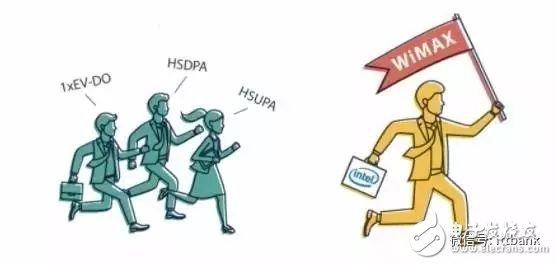
There is a trend of Intel's leading WiMax, but the telecommunications industry is a few happy ones.
OFDM is not a new technology. As early as the invention of OFDM by Bell Labs in the 1960s, the technical framework was established in the 1980s.
However, the hardware that can support OFDM at that time was not mature, and CDMA was led by Qualcomm, and it was eliminated from the 3G standard.
Simply put, CDMA is too red. If Intel and IT companies do not carry forward OFDM technology on WiFi, no one in the telecom industry has noticed OFDM that was not valued in the early days.
Due to the relationship between WiMax, OFDM has re-entered the vision of the telecom industry and academia.
Yay! Finally, you don't have to be tempted by Qualcomm's CDMA technology.
OFDM not only effectively eliminates multipath interference, but also has a much smaller complexity than CDMA. It is actually more advantageous than CDMA.
At this time, in addition to Qualcomm, the telecom giants are all happy: finally, they don’t have to look at Qualcomm’s face and pay a high Qualcomm tax!
If you can effectively increase the 4G transmission rate and bypass Qualcomm's CDMA patent trap, that's great! The 3GPP organization immediately turned to the wind. (Public phase ~ wind up ~ ~)
In 2008, 3GPP proposed Long Term Evolution (LTE) as the 3.9G technology standard.
In 2011, the Long Term Evolution (LTE-Advanced) was proposed as the 4G technology standard, and W-CDMA was replaced and OFDM was adopted.
As for Qualcomm, of course, I also saw the development prospects of OFDM.
In order not to fall behind, when WiMax entered the mobile communications industry in 2005, Qualcomm spent $600 million to strategically acquire Flarion, which specializes in OFDM technology.
In 2007, UMB (Ultra-Mobile Broadband) was proposed to integrate CDMA, OFDM, and MIMO into the UMB standard, and we want to continue to maintain the advantages of CDMA.
It is a pity that all manufacturers are afraid of Qualcomm. In the past, you were asked to call the King of the Mountain abusive. Now, if you look at it, you will not be able to push the wall.
Moreover, the base station with the highest global coverage is W-CDMA. Therefore, all major operators have decided to adopt LTE-Advanced as the fourth-generation communication technology standard.
UMB quickly went down because no one supported it. In the next year, Qualcomm stopped UMB and announced its participation in the 3GPP LTE camp.
After solving the difficult opponent of Qualcomm, what about WiMax?
Without the use of 3GPP to play WiMax, this camp will have its own mess.
Since WiMax is a technology evolved from WiFi, is WiMax an IT network or a telecommunications network?
The WiMax Forum is a complex group of people, and they have a lot of troubles in the industry.
The most critical issue is the compatibility of telecommunications equipment.
Just like Qualcomm's wide coverage on W-CDMA base stations, LTE is compatible with WCDMA and utilizes existing base station supporting equipment, while WiMax base stations have to be built from scratch.
What's more, LTE is the communication standard dominated by the telecom industry from beginning to end, and it is not enough for Intel to be the IT giant.
At this moment, Qualcomm has been unable to replicate the glory of the 3G era, and 4G has no longer used CDMA technology. (However, due to the wide layout, even if the lifeline CDMA has been greatly weakened, it still can charge a lot of patent fees on OFDM)
Intel also announced the abandonment of WiMax in 2010 to join the LTE camp.

5G
Change society
2G realizes the transition from the 1G analog era to the digital age. 3G realizes the transition from the 2G voice era to the data age. 4G realizes IP and the data rate is greatly improved.
What changes will 5G bring to us? The biggest change of 5G is to realize the communication from person to person to the communication between people and things, things and things, realize the interconnection of all things and promote social development.
Speed: from 4G 100Mbps, 5G can be as high as 10Gps, 100 times faster than 4G, easy to watch 3D movies or 4K movies.
Capacity and energy consumption: For applications such as Internet of Things (IoT) and smart homes, 5G networks will be able to accommodate more device connections while maintaining low-power endurance;
Low latency: Industrial 4.0 smart factories, car networking, telemedicine and other applications must have ultra-low latency.
The capacity of 5G is 1000 times that of 4G, and the peak rate is 10Gbps-20Gbps, which means that higher frequency bands are used, more base stations are built, and key technologies such as Massive MIMO are introduced.
Low latency and large-scale IoT connections mean that the network can provide diversified services, which requires more flexible and distributed networks, which requires a transformation from NFV/SDN to software/cloud and IT reconstruction. , to achieve network slicing.
And virtualization has opened up an open source platform, allowing more third parties and partners to participate, thus inspiring more innovation and value on the mature telecommunications network that has been running for many years.
5G is the transformation of the business model and the integration of the ecosystem.
As defined by NGMN:
5G is an end-to-end ecosystem that will create a fully mobile and fully connected society. 5G mainly includes three aspects: ecology, customers and business models. It delivers a consistent service experience that creates value for customers and partners through existing and new use cases, as well as sustainable business models.
The birth of 5G will further change our lives and society and promote a new information revolution. It’s coming, let’s wait and see.
A TPU Screen Protector made of the super toughness of the honeycomb structure. Its unique ultra-soft properties allow it to cover the most complex curves and contours in a device.
The self-healing design of the Hydrogel Screen Protector can protect the display screen of the device from damage, leave no air bubbles, and maintain the sensitivity of the touch screen. Advanced anti-fingerprint and dust- and oleophobic overlays keep your screen smudge- and dirt-free. This overlay is also important in providing maximum touch sensitivity for improved high-speed glide and optimal touch response.
The optical transparency of the Hydrogel Film is more than 90%, showing you the most original screen color and bringing the most realistic visual experience.
If you want to know more about the product information of the Hydrogel Screen Protector for vivo, please click the product details to view the parameters, model, picture, price and other information of the vivo Screen Protector.
Whether you are a group or an individual, we will do our best to provide you with accurate and comprehensive information about Hydrogel Screen Protectors!
Screen Protector For vivo,Hydrogel Screen Protector For vivo,Hydrogel Film for vivo,TPU Screen Protector For vivo
Shenzhen Jianjiantong Technology Co., Ltd. , https://www.jjtscreenprotector.com